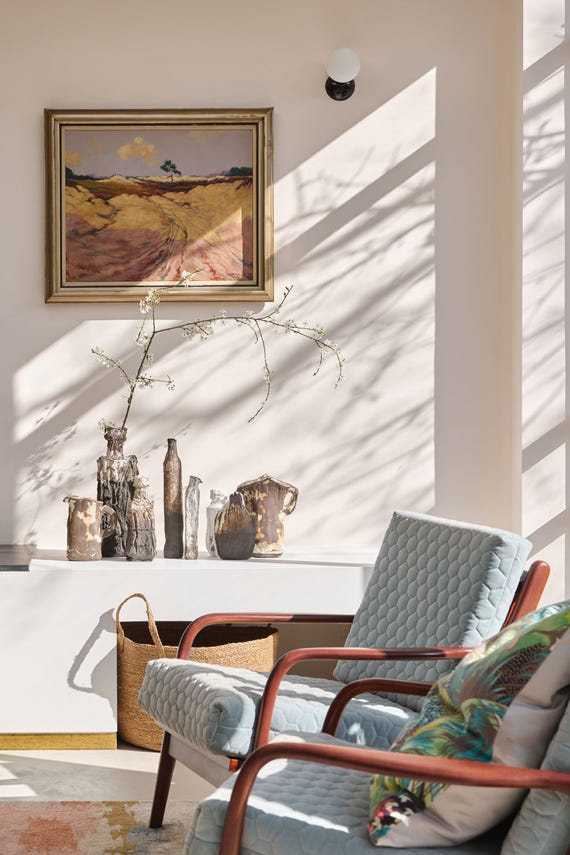Hanging wallpaper is one of the most rewarding ways to transform a space — and having the right tools at hand makes all the difference. Below is our recommended checklist to help ensure a smooth and successful installation (besides your beautiful new wallpaper, of course).
Ready to get started? Follow our step-by-step guide on how to hang wallpaper for detailed advice on preparing surfaces, applying paste, and hanging paper like a pro.
Wallpaper Hanging Checklist
Step Ladder
If you're papering walls or a ceiling, a step ladder is essential to reach safely. For lower projects, like the back of a bookcase, you might not need one.
Dust Sheets
Accidents happen. Dust sheets (or old bed linen) protect your floors and furniture from splashes, spills, and drips during the process.
Decorating Table
A flat, stable surface is crucial for measuring, cutting, and applying paste. An ironing board may seem tempting, but nothing beats a proper table with straight edges.
Wallpaper Paste
Our Farrow & Ball starch wallpaper paste is specially formulated for our handcrafted wallpapers. It’s non-acidic to protect delicate patterns, and the tube doubles as a measuring jug. One tube covers up to five rolls.
Bucket and Stir Stick
Used for mixing paste and water to the correct consistency.
Wallpaper Scissors
Long, sharp scissors help you cut clean, straight lines with ease — a must for neat application.
Plumb Line
A simple but essential tool: a string with a weight to help you mark perfect vertical lines. More accurate than relying on door frames or window edges.
Wallpaper Hanging Brush
Used to smooth wallpaper onto the surface and remove air bubbles for a flawless finish.
Seam Roller
This small roller flattens the seams between wallpaper drops, creating a seamless, professional look.
Utility Knife and Straight Edge
Perfect for trimming excess wallpaper or cutting around fittings and sockets. Offers greater precision than scissors.
Sponge or Microfibre Cloth (and Clean Water)
Often overlooked but essential. Leftover paste can damage wallpaper over time. Use a damp sponge or cloth to gently remove excess paste as you go, rinsing frequently.



